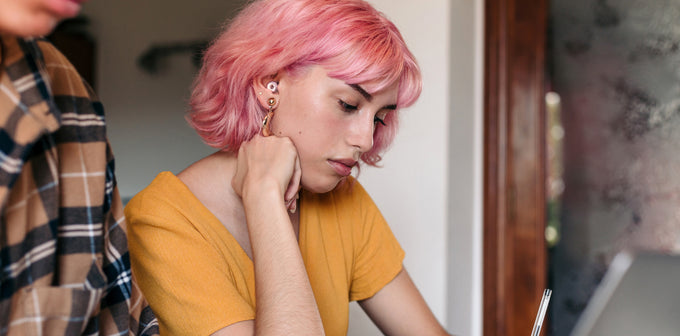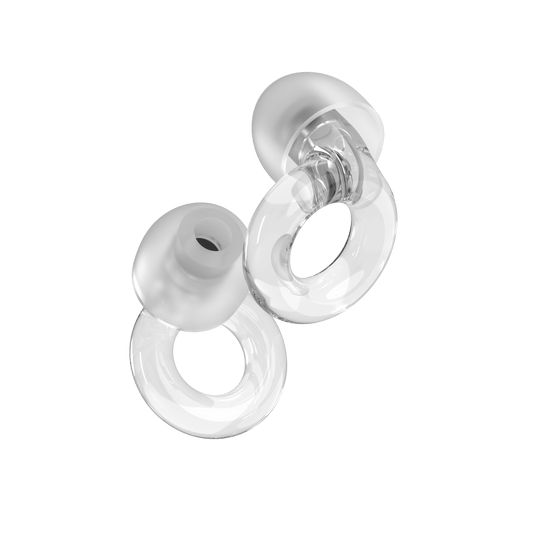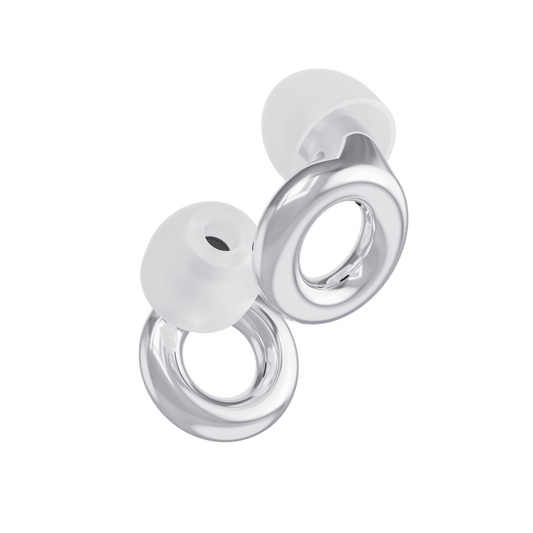The world is a loud place.
From screeching sirens, hammering roadworks, and piercing alarms all the way through to thunder, birdsong, and the neighbor's dog which seemingly never stops barking.
To even the most patient of people, it can sometimes all get a bit too much.
That being said, loud noises can also be associated with nice things. Activities such as going to a concert, setting off fireworks in celebration, or watching a movie in the theater can all be loud but pleasurable.
But what about when any type of loud sound becomes too much?
If you’re finding that loud noises are distressing you to the point of fear, then you may have what’s known as phonophobia.
What is a phobia?
To understand the effects of phonophobia, it’s important to fully understand what a phobia is.
People often use the terms “fear” and “phobia” interchangeably. But in reality, phobias are far more pronounced than fears.
Whereas fears are often logical and based on fact and reality, phobias are exaggerated or unrealistic in nature.
Phobias can often become unbearable for people – so much so that they may even reorganize their entire lives so that they can avoid their phobias at all costs. This can lead to a number of restrictions on their daily life, a feeling of constant anxiety, and a lot of mental stress.
What is the phobia of loud noises?
A phobia of loud noises is known as phonophobia, but is also known as sonophobia, acousticophobia, or ligyrophobia.
It is a condition that can make people feel overwhelmed, panicked, and anxious when confronted with high volumes – especially sudden, sharp sounds. And in some extreme cases, people can even be triggered by the sound of their own voice.
People who suffer from phonophobia can experience unpleasant physiological and psychological effects such as anxiety attacks or heart palpitations when faced with sudden or unexpected loud sounds.
And this particular phobia isn’t purely based on a fear of being exposed to high volumes, as it also extends to the anticipation of loud sounds. Studies carried out on the phobia have found that many people develop a fear of items, scenarios, or living things associated with high noise levels such as dogs, alarms, and even small children.
It’s clear to see why people who live with phonophobia can find it to be such a debilitating experience.
When does an aversion to loud noises become a phobia?
There’s no escaping the fact that loud noises are unpleasant. Whether you’re trying to get to sleep while the wind is howling away on a stormy night, or trying to relax while a baby is hollering and crying, loud noises aren’t many people’s idea of a good time.
But when does an aversion to loud noises become a phobia of sounds?
If you’re suffering from phonophobia, you will most likely experience an intense reaction to any form of high-volume sound. This will occur no matter what the cause is, or what type of sound it is.
This is when you know that you have surpassed a simple fear and passed the threshold into a phobia.
What causes phonophobia?
Phonophobia is a particularly rare condition that can start at any age.
As with most phobias, the exact origin is hard to determine – some say that it’s caused by genetic factors, whilst others believe the root cause lies in external factors.
If you’re going down the route of genetics playing a role, then it can be argued that people with a strong family history of mental health issues such as anxiety and depression may be more likely to develop phonophobia.
Whether that’s long-term trauma, childhood trauma, or a single traumatic incident, there are a number of different phobias that can develop as a result of trauma – even if the phobia isn’t actually directly related to the incident. There are also strong links to external factors such as trauma being to blame for phonophobia.
Phonophobia is slightly more common among people with autism spectrum disorder, or ASD for short. People with ASD can commonly experience sound sensitivity, a fear of loud noises, or a fear related to the anticipation of loud noises.


The symptoms of phonophobia
Phonophobia can be hard to diagnose due to the fact that it shares a lot of symptoms with other anxiety disorders. Here are some of the more common symptoms:
- Panic and anxiety attacks
- Excessive sweating
- Irregular or increased heartbeat
- Dizziness, unsteadiness, and lightheadedness
- An upset stomach and nausea
- Trembling or shaking
- Passing out
- An intense desire to escape
- Migraines
- An overwhelming fear of loud noise
Phonophobia can also be a symptom of a separate condition. These conditions include:
- Severe head or brain injuries: When you have had a traumatic injury to your skull, scalp, or brain, you can experience phonophobia as a side effect.
- Migraines: Migraines are a neurological condition and often result in debilitating headaches. Migraines make you incredibly sensitive to sound, so frequent migraines can eventually lead to developing phonophobia.
- Kleine-Levin syndrome: KLS is a rare disorder that causes people to need excessive amounts of sleep. Because of this, it’s often referred to as “sleeping beauty syndrome.” Due to the need for near-constant sleep, any loud noise is detrimental to the sufferer – which can lead to developing phonophobia.
Is phonophobia the only sound discomfort condition?
If you have an aversion to sound, it doesn’t automatically mean that you have phonophobia. There are other conditions that have sound discomfort as a symptom, including:
Misophonia
Whereas phonophobia is a fear of loud sounds, misophonia is a strong dislike or hatred of specific sounds.
Somebody suffering from misophonia will be triggered by certain sounds which will then elicit an emotional or physiological response. These responses will often be perceived as unreasonable when compared to the circumstances.
People who suffer from misophonia commonly say that the sound in question “drives them crazy.”
Common trigger sounds for people with misophonia include:
- Eating or chewing noises
- Heavy breathing
- Fidgeting
- Tapping fingers or feet
- Paper rustling
Hyperacusis
Hyperacusis, commonly known as noise sensitivity, is a hearing condition in which people perceive everyday sounds to be much louder than they actually are.
This heightened sensitivity to sound makes day-to-day life difficult, with even something as common as running water seeming exceptionally loud.
Common trigger sounds for people with hyperacusis include:
- Dogs barking
- Eating or chewing noises
- Car engines
- Coins jingling together
- A vacuum cleaner
Loudness recruitment
Recruitment is a physical condition that affects the inner ear. It is a condition that reduces your tolerance to high volumes and commonly affects people who suffer from some form of hearing loss due to damage to their cochlea – a part of the inner ear..
People with recruitment can suffer from a reduced understanding of speech, often describing the condition as being able to “hear but not understand.”
To put this into perspective, the standard range of tolerable volume is more than 100 dB. But when somebody is suffering from recruitment, that number drops considerably to around 35 dB.

How to deal with phonophobia
Unfortunately, there is no quick and easy cure for being scared of loud noises. However, there are a number of ways that you can control and even reduce the effects of phonophobia.
Relaxation techniques
As phonophobia is often linked with issues such as anxiety and stress, sometimes the effects can be reduced by some simple relaxation techniques.
Meditation and yoga can go a long way toward giving you a sense of peace, calmness, and balance that can help subdue phonophobia, as well as improve your overall mental and physical health.
The practice of meditation can help you to find your center and bring about some level of inner peace – making it a key tool when battling phobias.
Therapy
Like with any phobia, getting help from a professional is the best way toget a handle on your phonophobia.
Fortunately, there are a number of different types of therapy that have shown positive results when being used to treat phobias. Let’s take a look at the two most common:
Cognitive behavioral therapy (CBT)
Cognitive behavioral therapy, or CBT, is a type of psychotherapy that concentrates on recognizing negative or unhelpful patterns of behavior and thought.
Known as a “talking therapy”, CBT can help you manage your issues by encouraging you to change the way that you handle certain situations.
It’s commonly used to treat conditions such as depression and anxiety, but it has also proved to be very effective in treating several different types of phobias, such as phonophobia.
The typical course of treatment for CBT consists of between six and 20, hour-long sessions. It is a treatment that concentrates on the here and now, rather than searching for a root cause in the past in the way that many other therapies do.
Exposure therapy
Exposure therapy, or systematic desensitization, is another type of psychotherapy that is regularly utilized when treating people with phonophobia.
It works by using guided and repeated exposure to the phobia in question in order to desensitize the patient. By being exposed to the source of the fear with no ill consequences, it is thought that exposure therapy can help the patient realize that their fear is unwarranted.
While this type of therapy can be upsetting, it’s also proved to be extremely effective with high success rates.
Don’t worry though – a therapist running an exposure therapy session will use a graded approach so that you’re not instantly overwhelmed.
So for example, if you are afraid of mice, the therapist may start a session just by showing you a drawing of a mouse. Then upping the exposure level as you become more and more desensitized to the stimuli.
Earplugs
As we previously mentioned, the best course of action if you’re suffering from phonophobia is to seek professional help. However, we’re aware that therapy isn’t an overnight solution.
It’s no secret that it takes a lot of effort and commitment, and for some people, therapy can take months if not years to make true progress. But in the meantime, you can still take steps to reduce your discomfort. While it’s impossible to try and control every single element of the environment around you, you can take measures to limit the volume of the noise that you are exposing yourself to.
And that’s where earplugs can play a key role.
While it’s true that overuse of earplugs can actually worsen the effects of phonophobia, when used in moderation or in special circumstances they can really make a world of difference.
Earplugs such as Loop Experience, Loop Experience Plus (Pro), which reduce noise levels by 18 - 23 dB, and Loop Quiet, which help to reduce noise levels by up to 24 dB, can allow you to protect yourself in situations where the noise level just becomes too much.
And for those who are concerned about experiencing the echoey occlusion effect, Loop’s Engage earplugs offer up to 16 dB noise reduction without compromising sound clarity.
With their newly engineered filter, Loop Engage allow you to reduce noise whilst avoiding any echoey effects.
So that you can take the edge of the world of sound whilst still staying present. The best way to safely incorporate earplugs into your phonophobia treatment is to ask your doctor or therapist to guide you through the use of earplugs. And if they don’t turn out to be a good solution for you? That’s fine too. Everyone deals with issues differently and what works for one person may not work for you.
At Loop, we understand this better than anyone. That’s why we have a 100 day return warranty, so you can make sure that earplugs are the right solution for you.
Our earplugs
Don’t let your phobia take control
Left unchecked, phonophobia is a condition that can truly affect your quality of life.
But when tackled head-on, the condition is actually highly treatable, and handling it can become a simple part of your daily routine.
There is no question that the best course of action is to seek help from a professional healthcare expert. A trained professional will be able to assess your condition, decide the best course of action, and then point you in the right direction of treatment.
But if you want to be comfortable whilst you’re working toward overcoming your phobia, then earplugs such as Loop Engage can help guide you through your fear and make your day-to-day life more comfortable.
Because to truly live life at your own volume, you need to be the one in control of your destiny.

Top tips for better sleep while traveling
Do you have trouble falling asleep when traveling? These top tips will help you get the sleep you need when you’re on...

How to protect your ears when flying
Discover our tips and advice on how to protect your ears when flying to avoid any discomfort or pain. Read our sugges...

Which Loop Earplugs are right for me?
People wear Loops for live music and noise sensitivity, parenting and sleep. Use this guide to determine which Loops ...
















